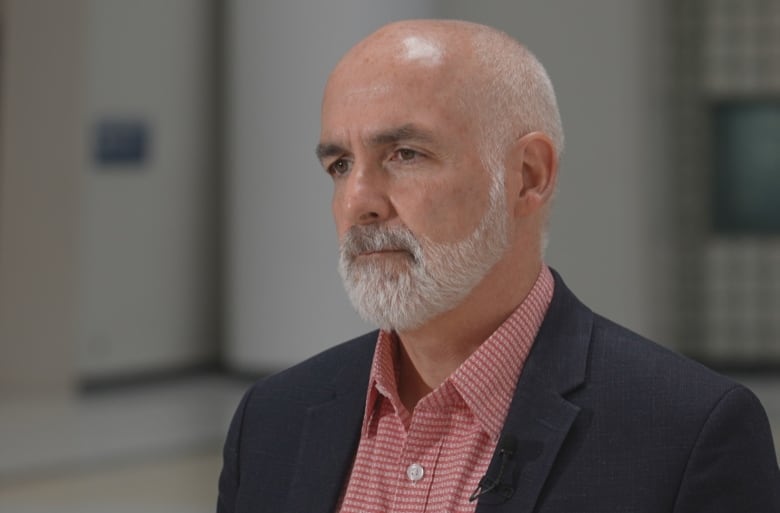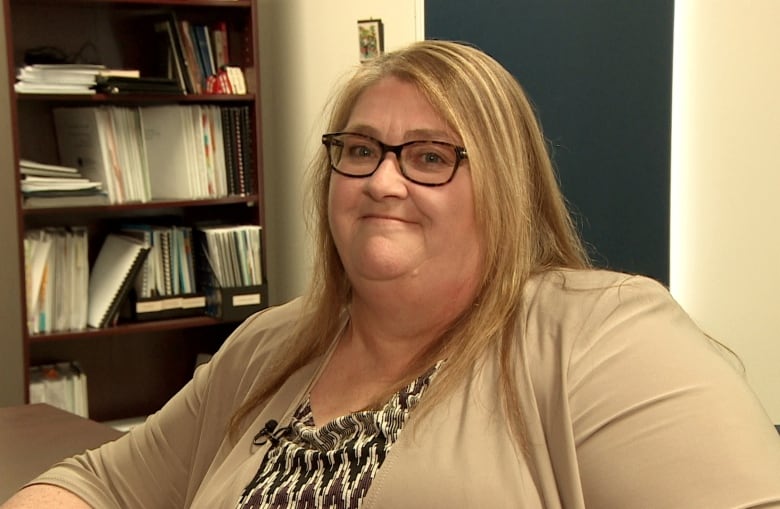The Newfoundland and Labrador government paid private companies nearly $400,000 per child on average last year to house and care for kids with complex needs.
And data obtained by CBC News through access-to-information show those payments continue to dramatically rise, despite provincial politicians repeatedly stressing the importance of keeping spiralling costs under control.
Over the last six years, the province spent nearly $420 million on services provided by fewer than a dozen companies.
Almost $90 million of that total was in this past year alone — a jump of more than $30 million compared to 2018-19.
What’s more, it’s unclear what work the government has done to determine whether this model is the best way to care for those children.
Meanwhile, others — from lawyers to longtime advocates — have questions about how things are being done.
While they are talking, the minister in charge isn’t.
Children, Seniors and Social Development Minister Paul Pike did not agree to interview requests from CBC News.
In a statement, his department said Newfoundland and Labrador has the highest rate of children and youth with complex needs in the country, and that’s resulted in growth in the number of staffed residential placements.
Officials stressed that there are progress reports completed for each child in care, and they will be implementing “overall outcome indicators” this coming year.
‘Better outcomes that can be achieved’
Sheldon Pollett was at the helm of St. John’s-based Choices for Youth for nearly a quarter century before his recent departure for another job.
Pollett says there is a rapidly escalating number of young people ending up in harm’s way, and he’s not sure the current system is the most effective way of addressing the problem.
“There are better outcomes that can be achieved,” Pollett said.
He acknowledges that won’t be easy work, and says the focus needs to be on early intervention and prevention — something that will require all levels of government to work together.
“I don’t want to underestimate how hard it is and how complex it is,” he said.
“What we do know, there are better solutions that exist today than even when I started 20 years ago, even when I was doing this work 10 years ago.”
Interactions with justice system
Public statistics on outcomes for children in the system can be hard to come by.
The premier’s task force on improving educational outcomes, published in 2017, does have some data points — albeit potentially dated now.

The report found that “children in care are a particular concern as they quite often have complex needs and they have poor educational outcomes.”
It found that about 140 children were living in staffed group homes, and historically more than three-quarters of them do not graduate from high school.
And some get swept up in the justice system.
Chris McCarthy first became aware of challenges facing youth during his time practising as a lawyer in Ontario.
That carried on when he came to Newfoundland about a decade ago, and worked as a Crown prosecutor.
Criminalized in a group home setting
According to McCarthy, behaviour that would not involve the authorities in a family home become criminalized in the group home system.
“I can tell you that, from the sublime to the ridiculous, the young lady who didn’t get her way at lunch, she threw the remnants of her grilled cheese sandwich across the table at a worker who denied her permission, and she was charged with assault with a weapon — to wit, a grilled cheese sandwich,” McCarthy said.
“So as silly as that may sound, those are the kind of things that I was seeing children be charged with in the criminal justice system.”

In his experience, McCarthy says that was being done to give workers more clout to control children in their care.
And he says problems can also arise from the blend of children living in group home environments.
“They’re mixed in with kids who actually might be what we would have called, in the olden days, incorrigibles, those who actually do commit violent offences and other offences,” McCarthy said.
“And the problem is they’re living together. They’re rubbing shoulders and those kids can be drawn into criminal activity just because of their association with the other kids.”
McCarthy says he knows of a few success stories of those who have navigated their way out of the system.
But not enough.
“The sad part is there are far too many who don’t have that opportunity and aren’t able to make it,” he said.
In an email to CBC News, the Department of Children, Seniors and Social Development acknowledged that some youth do interact with the justice system, but stressed that kids in Level 4 care have experienced significant maltreatment and abuse — factors that may subsequently lead to intersection with criminal behaviour.
The department said the majority of kids in the staffed placements system don’t have involvement with the justice system, but acknowledged that it doesn’t actually track those numbers.
Past advocate’s reports flagged staffing issues
In past reports, the province’s then child and youth advocate, Jackie Lake Kavanagh, flagged concerns.
The 2019 report titled Seen But Not Heard found that “the home care workers in this placement did not have the education and experience needed to work with children who had experienced severe and complex trauma.”
It also highlighted permanency planning for children and youth in care as a “systemic” area for improvement.
“It is widely recognized that staffed residential placements are not an ideal place for children to grow up,” the report advised.
And in late 2021, another report — A Special Kind of Care — revealed evidence of an “ineffective” staff training program.
Also, staff turnover — in particular the use of unfamiliar casual workers — had “detrimental effects” on the young person’s well-being in that case.
It concluded that “the identified issues are broader and more systemic in nature than this one case.”
The current advocate says concerns like those haven’t been raised with her.

Linda Clemens Spurrell stressed the importance of monitoring and oversight.
“Ultimately what I would say is that, whatever service is going to be provided to young people on behalf of government, that it has to be in their best interests and it has to be rights driven,” Clemens Spurrell told CBC News.
“The young person has a right to receive the best care that they can receive.”
‘Comprehensive’ oversight and monitoring
In a statement, the department said staff who care for children are required to have specialized education, training, experience and skills, to ensure their safety and well-being.
Officials stressed that monitoring and oversight of staffed residential placements is a “comprehensive, continuous process” under the department’s licensing regime.
They added that supporting permanency and outcomes for children and youth in care is a “primary focus” of the department’s interventions, programs and services.
This year, the department said it will be implementing overall outcome indicators “consistent with the National Child Welfare Outcomes Indicator Matrix.”
There are 913 children or youth in care.
Of those kids, 225 live in staffed residential placements, including group homes and individual living arrangements. Five years ago, that number was 160.
The department said costs have gone up because of the increase in the number of kids requiring this level of care. Other factors include salary increases and general inflationary pressures.
Costs of care swell by tens of millions
Six years ago, the minister then in charge of the child-protection system acknowledged the skyrocketing costs of caring for Level 4 children — those with the greatest needs.
“This is something we discuss every single day in the department,” Lisa Dempster told a legislative committee on April 25, 2018.
“The increase in Level 4 concerns us all.”
In the just-ended 2017-18 fiscal year, there was an unbudgeted expenditure of more $10 million related to Level 4 care.
Dempster said an interdepartmental group was formed “that’s looking really hard at this issue.”
The province budgeted for those costs to ebb again.
But the opposite happened.
Unexpectedly-high Level 4 care costs saw budgetary projections bulge by another $15 million the following year.
Dempster told the same House of Assembly committee on June 13, 2019, that a tremendous amount of effort had happened in the department to have the amount trend downwards.
“Staff have worked extremely hard,” she said. “We were on this trajectory of going up with children in care — not a sustainable path.”
A new year, a new minister — the same issue.
In 2020, the department again had to dip into a government contingency fund to cover escalating Level 4 expenditures, with then minister Brian Warr citing increased costs for children with complex needs requiring care.
According to numbers obtained through access to information, payments to private service providers for complex care stayed largely flat until the 2022-23 fiscal year.
Then the total erupted upward again.
“We had a lot of conversations with the minister of finance on this particular one, so I have to keep my head down,” then minister John Abbott told a legislative committee on April 5, 2023.
“What we have seen is that the number of youth that have come into care and have stayed in care, the complexity of the cases has required us to do more independent living arrangements. The cost of those has grown significantly. We could spend $300,000, $400,000, $500,000, $600,000, $700,000 per case, depending on the needs. The numbers of that have come up this year.”
But again, assurances that work was underway.
“We’re putting in a plan and we started that in terms of how we can look at how we can reorganize some of the supports around those youth,” Abbott said at the time.
However, costs did not come under control.
In 2023-24, payments to private service providers spiked again, up more than $11 million to nearly $90 million.
Download our free CBC News app to sign up for push alerts for CBC Newfoundland and Labrador. Click here to visit our landing page.



